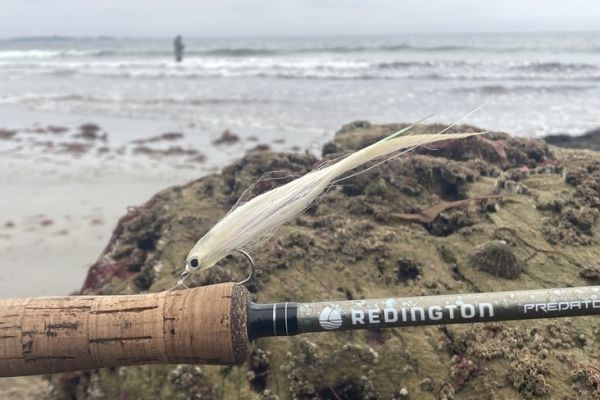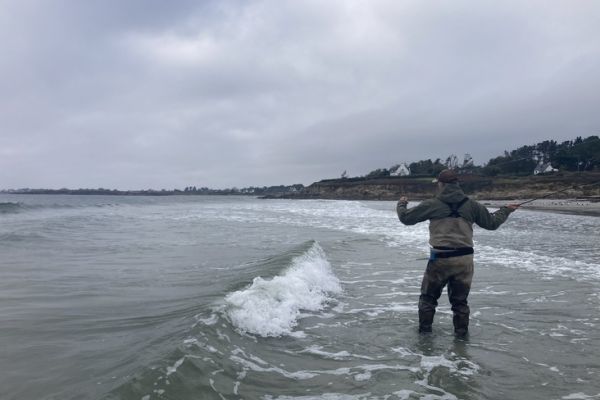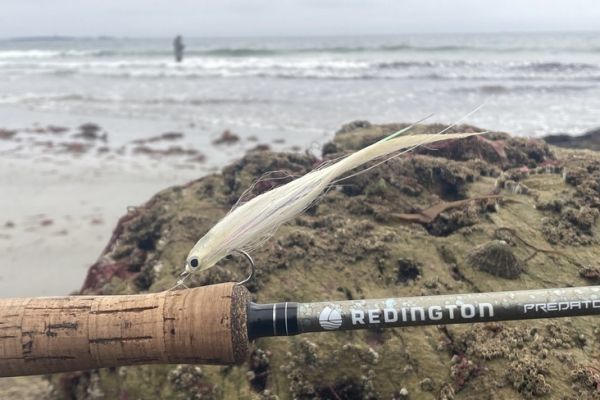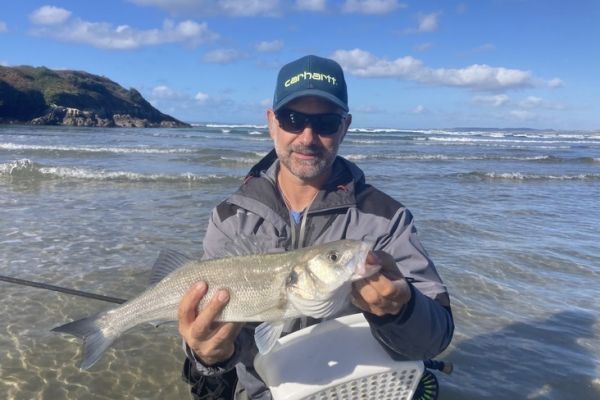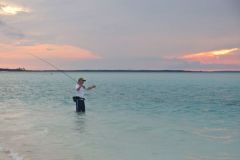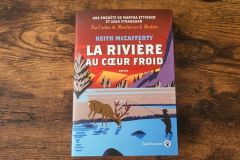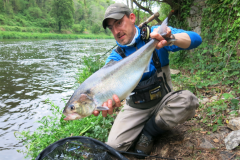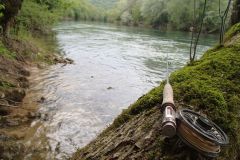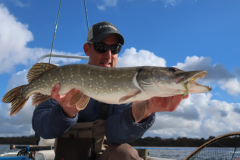The equipment used to fish for sea bass on the beach is no different from that used to fish for sea bass from the shore in other types of environment, or from a boat. However, you need to constantly adapt to depth, visibility and conditions to find out how to catch bass on each type of beach.
Fishing tackle for beach fishing
- Canes
The most common rod is a 9-foot 8-gauge. This is the most versatile rod, allowing you to fish in all conditions and remaining light enough to enjoy fighting bass of all sizes. However, if conditions are more difficult, particularly when casting far out and/or into the wind, a 9-power rod will be a definite advantage.
Rods for exotic or sea fishing are recommended, as they have faster, more powerful actions and allow us to cast our flies in any condition. What's more, they are sea-treated and therefore less prone to corrosion.
- Reels
The reel is not of prime importance, as bass are combative, but neither are they fish that require a very powerful drag. Rushes are often powerful, but short. You rarely see the backing come off the reel.
On the other hand, it's a good idea to have a watertight brake, as seawater, sand and silt can quickly damage or alter the qualities of your reel, making it less reliable.
It should also balance your rod so as not to impede casting and/or create a counterweight.
- Bristles
The choice of silk is very important depending on the type of beach, but above all on the depth in which you are going to fish.
On gently sloping beaches, a floating WF (weight forward, i.e. with a staggered spindle) line is recommended for moving your fly between two waters or close to the surface. It can also be used for sight-fishing when conditions permit.
It can also be used for surface fishing with poppers and gurglers that emit sounds and sprays of water and attract bass.
The intermediate fly line will be necessary when the slope is steeper or if you're fishing in more water, whether at the end of a rise or the beginning of a fall. In fact, if the water layer is greater, it's important that your fly can fish between two waters or closer to the bottom to be effective.
Plunging bristles are rarely used from shore and offer little or no advantage on the beach.
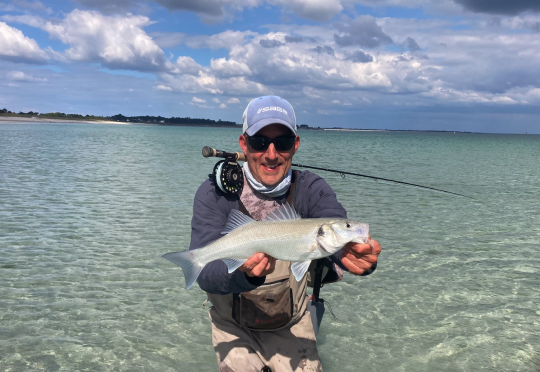
- Leaders and tippets
The leader can be made by yourself, following the various models available on the Internet, choosing a tapering formula that gives speed and allows the fly to turn well.
You can also use ready-made rat's tails, which are now available from all brands. They have the advantage of being knotless, which limits snagging in seaweed, or of being more discreet.
At the end of the leader or rat tail, it's a good idea to use a micro ring or to make a micro loop. The length of the tip will vary according to the clarity of the water, the wary nature of the fish and the wind. A tip that is too long will be more difficult to cast, so in these conditions it can be shortened.
Diameters generally range from 25° to 35°. In clear waters and on wary fish, we tend to fish fine (25 or 28°). In choppy waters or on areas containing structures such as rocks, 30° to 35° can be used. Rarely higher.
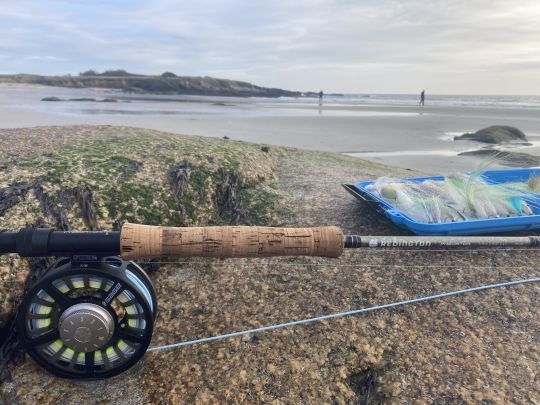
Flies for beach fishing
As always, the choice of fly is important, as it must be adapted to the day's menu.
We mainly use flies called streamers that imitate small fish. But we can also use imitations of crabs, shrimps or other prey such as squid.
Whether in size (usually between 10 and 20 cm), shape (elongated or stockier), silhouette or color, you'll need to adapt it to the color of the water, sky and prey on the beach where you'll be.
When sight fishing, it's not uncommon to see bass refusing our flies. This means they are sometimes selective and you have to find what they are looking for.
The basic colors are often white on the belly, with olive, tan, blue, green, yellow, gray, white and chartreuse on the back in clear waters. However, it is sometimes necessary to fish with darker flies in rocky areas, or in waters that are more tinted by the wind or the presence of algae or weed beds. Then test flashier colors to see if they bring you results.
This means changing flies regularly to find the one that works. Don't use one or two fly patterns all the time, but look for what will make the difference on each outing, and even change several times during the fishing trip. Prey change throughout the season and fish can be selective at times.
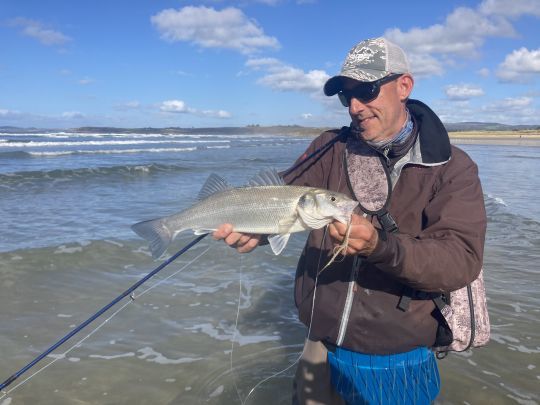
Essential accessories
In addition to fishing tackle, when beach fishing from shore, it's important to use a casting basket to store your line when retrieving it so that it doesn't snag, sink or step on it, preventing you from casting what you've pulled out.
They come in many shapes and materials. You need to test several to find the one that suits you best. They're never easy to use and all have their advantages/disadvantages, but they're indispensable for wadding.
In my opinion, polarized glasses are a must-have safety item. They protect your eyes when casting, and prevent injury in strong winds if you don't have complete control over your casting.
They make fishing more comfortable by reducing reverberation, and allow you to see underwater and follow your fly. Sometimes we see following fish, which gives us information on our choice of fly.
Of course, they are essential for sight-fishing and spotting marauding fish.
